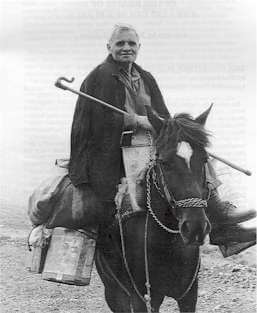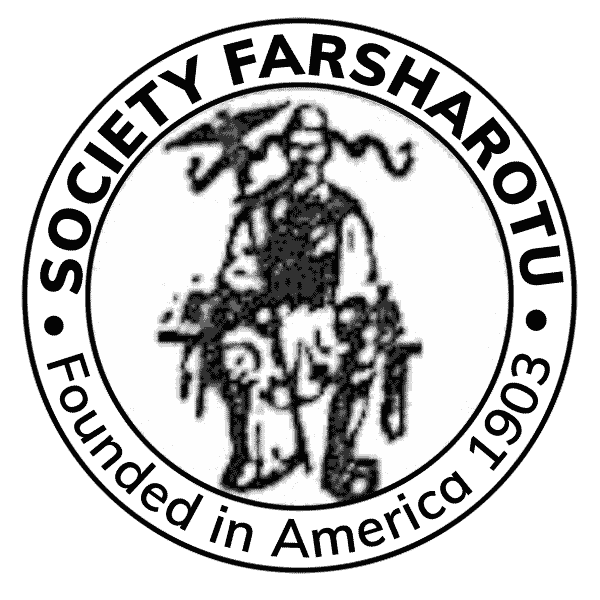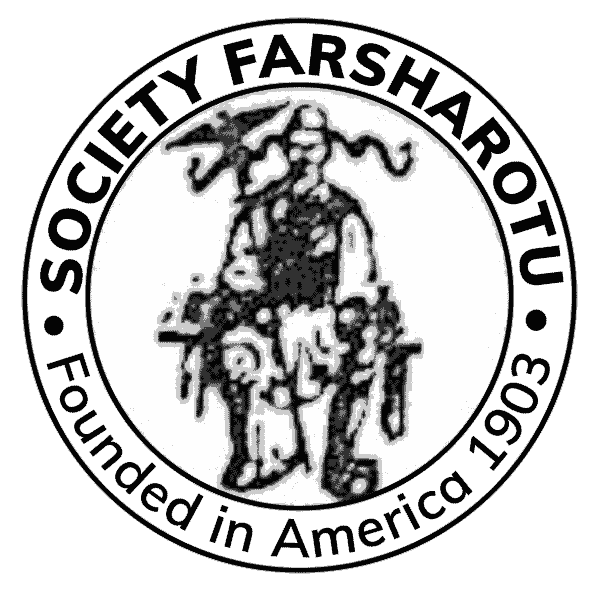Community News
New Members
The Society warmly welcomes the following new members:
| Patricia J. Appuzo | Fairfield, CT |
| Richard Bicki | Providence, RI |
| Arthur Gravanis | Southport, CT |
| Elissa Mondschein | Oakland, CA |
Deaths
The Society mourns the passing of two pillars of our community and extends its deepest sympathies to their families:
John A. BABU, 88, born in Deshnitsa, Albania. John is survived by his wife Elizaveta; his son Michael, a very active and dedicated member of the Society Farsarotul; and his daughter Mariana, who is married to the popular Deacon of St. Dimitrie Church in Bridgeport, George Coca.
Hristu ZDRU, 87, born in Macedonia, and for many years the cantor at St. Dimitrie Church in Bridgeport. He is survived by his wife Anna and their three sons, Nicholas, George, and James.
FROM ALBANIA
From Greece’s Macedonia Press Agency we learn that in mid-May, 25 tons of food and medicine was delivered and distributed to the people of Albania. This effort sprung from a Greek-British initiative and constituted one of the largest humanitarian missions to this strife-torn country. The British organization International Child Care donated many tons of food, which was collected by the Greek Caravan of Solidarity. Some 3,700 care packages and boxes of food were dispersed, mainly in the regions of Korcл and Voskopoja (Moschopolis).
In July the Athens News Agency reported that the Greek ambassador to Albania, Costas Prevedourakis, had visited Korce and other Albanian towns to underline Greece’s support for its neighboring country. “The tour was also aimed at strenghtening ties between Greece and the Vlach community concentrated in the specific region, which recently elected two Parliament deputies on the Union of Human Rights Party (KEAD),” the report noted. Prevendourakis stressed Greece’s interest in the development of the region, which is close to the Greek-Albanian border and has “a longstanding Greek presence.”
We recently received a copy of “Hic Leones Sunt,” a videotape about our people that was made in Albania and sponsored by the Albanian Vlach Association. It features a few Aromanian songs performed by the acclaimed singer Elie Fara. Society Farsarotul member Dina Vanghel is currently translating the tape into English from the five languages used on the tape — Albanian, Aromanian, French, Greek, and Macedonian. The Society hopes to add English subtitles and make copies of the documentary available here in the U.S.
There are unconfirmed reports from the Greek-American community that Albanian Prime Minister Fatos Nano is of Vlach origin. Nano served as Prime Minister in 1991 and was instrumental in changing the the Party of Labor of Albania (the Communist party) into the Socialist Party. He was imprisoned by Berisha in 1994 for embezzlement, a charge that many held was trumped-up.
A popular magazine named Odyssey has been taking the Greek-American community by storm for three years now. It features include an elegant design, excellent writing, a youthful voice, and a willingness to challenge the sacred cows of Greek nationalism. In a recent issue on Albania, however, Odyssey missed an opportunity to notice the Vlachs three times: an article about St. Catherine’s monastery on Mt. Sinai mentioned the Jabaliya, a Bedouin tribe that guards the monastery, but didn’t say a word about British archaeologist John Nandris’s discovery that the Jabaliya, assigned to St. Catherine’s during the reign of Justinian, claim Vlach origins; an essay by Nicholas Gage lamented the possible disappearance of the Greek community of Albania, with not a word about the much more immediate possibility of the disappearance of the Vlach community; and, finally, a review of hotels cited La Moara, a hotel of traditional design built in Nymphaio by the (Vlach) Boutari family, as Abest hotel on the mainland without once mentioning the Vlachs (moara, as Aromanian speakers know, means Amill, from the Latin word mola; the lyrics of the Vlach song “Vanghelitsa,” which is popular among Greek Vlachs, include this line, Apa aratsi di la moara/ Stai s’ti bash ninga ‘na oara — “Stay here by the mill with its nice cold water, so I can kiss you once again”). We’re very hopeful, however, that at some point Odyssey will find occasion to tackle the Vlachs as a subject matter, contentious though the topic may be among some Greeks.
FROM GREECE
In February 1994 the Center for the Study of Greek Minorities published in Thessaloniki a Report on the Greek Minority in F.Y.R.M. in response to a Helsinki Watch Report on Human Rights that was critical of Greece’s treatment of its Macedonian minority. The report, sponsored by the Lawyers Association of Thessaloniki, claims that a large Greek minority (250,000) is living in Macedonia, comprised of Vlach-speaking Greeks, native Greeks, Sarakatsan Greeks, and Greek political refugees. Although clearly in the party line of Greek nationalist propaganda, the report nonetheless has some interesting information about the Vlach community in Macedonia. We mentioned the report to an interested Greek scholar who, though also appalled by the undisguised nationalism of the report, tried to obtain a copy, only to find that the group had somehow disappeared from the address given on the report….
FROM MACEDONIA
Phillip Guddemi and Gail Kara, whose article in this issue focuses on the Vlacks of Macedonia, are hoping to do oral research next year among Aromanians in the area of Bituli (Bitolja, Monastiri). Phillip would like to begin learning Aromanian and is interested in locating native speakers in Northern California, particularly the Sacramento and Bay areas. We encourage anyone who can help to contact him at 821 Carro Drive, #2, Sacramento, CA 95825.
The Internet site for News from ex-Yugoslav Macedonia regularly carries news items about the Vlachs. In recent months, we have found the following information on this site:
The first Macedonian-Vlach Dictionary has been published in Macedonia; it was promoted early this year in an event held by the Manakia Brothers Vlach Association in the House of Culture in Bituli.
At a summer session of the Council of Europe, the Macedonian delegation held up the Vlach community of Macedonia, whose rights are specifically recognized in the macedonian Constitution, to demonstrate that “Macedonia should be considered a role model in terms of upholding the rights of this minority compared to other Balkan states.”
The Helsinki Committee in Macedonia recorded several cases in which ethnic Vlachs had been forbidden to change their family name back into their own langauge. An example from 1995 is the case of Mitko and Marina Kostovi, who submitted such a request to the Ministry of the Interior only to have it rejected. They wanted their name changed back to Papouli. The Kostovis appealed the decision with the Administrative Commission to no avail. The Commission confirmed the initial ruling on grounds that the alteration of their family name would result in Aa change of personal identity and only serve as an Aobstruction to legal procedures.
From August 24-30, a meeting will be held in Bituli to attempt to standardize the spelling used in writing the Aromanian language. Representatives from the United States and several Balkan countries are expected to attend. Society member Tiberius Cunia is deeply involved in this effort; we will try to obtain a report on the results.
FROM ROMANIA
We are fortunate to have a correspondent in Romania, Ms. Irina PARIS, Assistant Editor of Bana Armaneasca, who is fluent in English. She passed along some exciting news from the world of sports: Alongside the name of world class soccer player Georghe HAGI, we can now add that of gymnast Dominique MOCEANU, one of America’s gold-winning Olympians, as talented atheletes with Aromanian roots. Ms. Paris learned from local sources that Moceanu’s father is a Vlach from Greece who married a Vlach from Romania, and that Dominique speaks fluent Aromanian.
Also from Ms. Paris comes the sad news of the passing of several prominent Aromanian poets:
Teohar MIHADAS, born in Greece, was one of Romania’s most important authors and poets. His publications in Aromanian include Botsli di dindinde (Voices from the Other World) and the soon to be published book of poetry Oara di hare (The Hour of Bliss) as well as two novels Chinjliji di pi Golna (The Pine Trees of Golna) and Locurle a fantanjlor (The Place of the Springs), the latter translated from Romanian into Aromanian by Ilie A. Ceara. The above were published by CARTEA AROMANA. Although he wrote primarily in Romanian, Mihadash frequently referred in his works to his Vlach origins in Turia (Krania), as well as his many friends and ancestors there.
Atanasie NASTA was one of the prominent representatives of modern Aromanian poetry. He is the author of several books of poems in Romanian. His poems in Aromanian were published 1996 at DIMINDAREA publishing house under the title, Aramaname, armaname.
Dumitru PARIZA A writer known for his pastoral poems depicting his native Macedonia, he authored Fucurina Neasteasa (The Ever-Burning Hearth).
While we’re on the subject of literature: Between 1994 and 1996, the publishing house DIMANDAREA PARINTEASCA of Bucharest printed nine books in Aromanian, including Nida Boga’s Voskopolea and La Stani; Sirma Guci’s Cafta-mi, and Vasile Tode’s Cuvendzili a meali. In addition, in 1996 the Bucharest publishing house ORIENT-OCCIDENT printed “The Song of Songs,” the beautiful Biblical love poems, translated into Aromanian by Dina Cuvata.
FROM EUROPE
The Society has obtained a copy of “Report ADOC7728 of the Council of Europe, Parliamentary Assembly on the Status of the Aromanians.”
Dated 17 January 1997 and prepared by Mr. Luis Maria de Puig of the Socialist Group of Spain, the report aims to “draw attention to the critical situation of the Aromanian language and culture. These have been present in the Balkans for over 2000 years, but face today a serious risk of extinction.”
To prevent such a cultural loss for Europe, the Assembly encouraged Balkan states where the Aromanians live to support their language in the fields of education, religion and the media, and to implement the European Charter of Regional or Minority Languages.
The report said that there are some 500,000 to 1.5 million Aromanians in the world today, only 250,000 of whom can speak their mother tongue. The report reflects concerns that the Aromanians’ language and culture seem “doomed to extinction unless European institutions, and the Council of Europe in particular, come to their aid.”
The report asked states to support the Aromanians in several ways:
(a) education in their mother tongue
(b) religious services in Aromanian in their churches;
(c) newspapers, magazines and radio and television programmes in Aromanian;
(d) support for their cultural associations.
After briefly discussing the history of the Aromanians and their present status in the different Balkan nations, Mr. Puig concludes the report as follows:
“The situation of the Aromanian community varies from country to country. It should be stressed that the Aromanians are full Albanian, Bulgarian, Greek, Macedonian, Yugoslav or Romanian citizens. They are fluent in the various languages spoken in their countries and are integrated into their national societies. I therefore think it would be ludicrous to consider them as any kind of threat to their countries, which, on the contrary, they enrich culturally.”
FROM THE U.S.
A June 1997 issue of The GreekAmerican notes that “Consumption of feta cheese from Greece has increased by 25% since 1990. Andrew Dalby in his book Siren Feasts: A History of Food and Gastronomy, tells us that there are at least 15 kinds of feta, distinguished primarily by their place of origin. In the Middle Ages, Danby informs us, the name for feta was prosfatos (recent, or fresh, cheese). The increase in feta consumption, by the way, is due largely to both Australian and Greek American restaurants that have been introducing it to their non-Greek customers for many years.”
FROM CYBERSPACE
The World Wide Web continues to be an incredible resource for Aromanians who are interested in their culture and heritage. Following is a sampling of items found in recent months:
The American Cheese Society held its 1996 annual conference in Metsovo; for a brief article on Metsovo cheese-making, see www.cheesewizard.com/ journal/metsovo.htm.
The New York Public Library database turned up two interesting items: “The Vlachs and their Pita,” by A. Ritsos (in German), in a 1992 issue of Byzantinoslavica; and “The Household Formation Pattern of a Vlach Mountain Community in Greece: Syrrako, 1898-1929,” by R. Caftanzoglou in a 1994 issue of The Journal of Family History.
The Web site for the Modern Greek Studies Yearbook, http://cla.umn.edu/iis/mgs/mgsyb6.html, lists a review article, “Language of the Aroumanians in Contact with Greece,” by Demetrius Moutsos.
A wildly pro-Hungarian Web site carries a slanted piece entitled “The Vlach Language and Culture” — www.net.hu/corvinus/whirlw/whirlw6.html.
A newsgroup on Deja News featuring lively discussion about the Vlachs; do a search on www.dejanews.com for “Vlachs” or “Vlakhi.”
The Metsovo home page cited in the last issue of this Newsletter now has a section entitled “Access to Tradition,” through which you can place orders for traditional rugs and tapestries from Metsovo and throughout Greece.

The nobility of the shepherd on his steed
(photo by James Prineas)


Responses